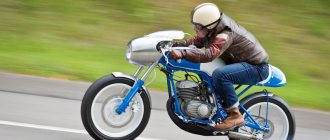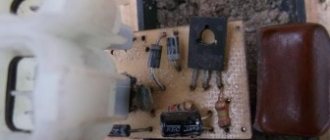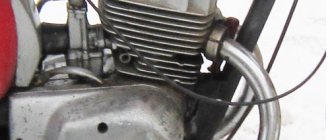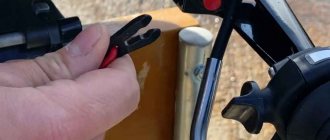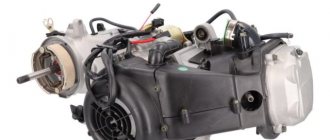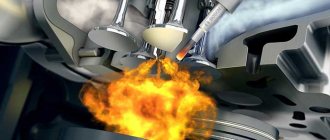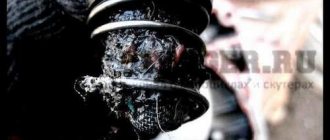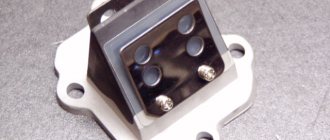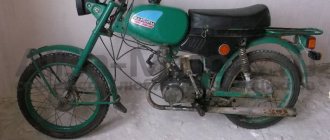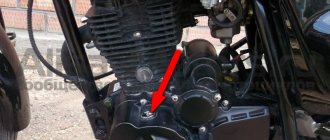History of the creation of a rotary engine
The second name of the rotary engine (RPE) is Wankel (a kind of analogue of a diesel engine).
It is Felix Wankel who today is credited with the laurels of the inventor of the rotary piston engine, and even a touching story is told about how Wankel walked towards his goal at the same time as Hitler walked towards his. In fact, everything was a little different: a talented engineer, Felix Wankel, really worked on developing a new, simple internal combustion engine, but it was a different engine based on the joint rotation of rotors.
After the war, Wankel was recruited by the German company NSU, which was mainly involved in the production of motorcycles, to one of the working groups working on the creation of a rotary engine under the leadership of Walter Freude.
Wankel's contribution was extensive research into rotary valve seals. The basic design and engineering concept are Freud's. Although Wankel had a patent for dual rotation.
The first engine had a rotating chamber and a stationary rotor. The inconvenience of the design suggested the idea of changing the layout.
The first rotating rotor engine began operation in mid-1958. It differed little from its descendant of our days - except that the candles had to be moved to the body.
Felix Wankel and his first rotary engine
Soon the company announced that it had managed to create a new and very promising engine. Almost a hundred car manufacturing companies have purchased licenses to produce this engine. A third of the licenses ended up in Japan.
Power and working stroke
When the Wankel engine operates, a standard 4-stroke cycle is used, gas distribution is carried out by the edges of the rotor. The incoming flow has reduced turbulence, which leads to uneven combustion of the mixture and the release of part of the fuel with the exhaust gas flow. During one working cycle of the rotor, the eccentric shaft connected to it will perform 3 revolutions.
When rotating, the volume of the chambers changes, which makes it possible to avoid installing a valve mechanism with a forced drive.
RPD in the USSR
But the Soviet Union did not buy a license at all. The development of our own rotary engine began with the fact that the German Ro-80 car, the production of which NSU began in 1967, was brought to the Union and dismantled.
Seven years after this, a design bureau appeared at the VAZ plant, developing exclusively rotary piston engines. Through his work, the VAZ-311 engine appeared in 1976. But the first pancake turned out to be lumpy, and it was refined for another six years.
The first Soviet production car with a rotary engine was the VAZ-21018, introduced in 1982. Unfortunately, already in the pilot batch, the motors of all the cars failed. They worked on it for another year, after which the VAZ-411 and VAZ 413 appeared, which were adopted by the security forces of the USSR. There they weren’t particularly worried about fuel consumption and the short service life of the engine, but they needed fast, powerful, but inconspicuous cars that could keep up with a foreign car.
VAZ with a rotary engine (GAI)
It didn’t start What happened to the Wankel engine and where did it disappear from the car market
This year marks the half-century anniversary of two iconic models in the history of the automotive industry. The German NSU Ro 80 and the Japanese Mazda Cosmo became the first cars with a rotary engine that fit the definition of “mass-produced”. But, alas, the new type of internal combustion engine invented by NSU engineers Wankel and Freude failed to conquer the world.
After the creation of the piston internal combustion engine at the end of the 19th century, progress in this area followed the path of developing an existing concept. Engineers created more and more powerful and advanced engines, but the essence remained the same - fuel entered the cylindrical chamber in one way or another, and the gases formed after combustion of the fuel pushed the piston. And only in the late 1950s, two German engineers who worked at the NSU company, then famous for its motorcycles, Felix Wankel and Walter Freude, proposed a fundamentally new design.
In their engine, there were no cylinders as a class: a triangular rotor mounted on a shaft was rigidly connected to a gear wheel that meshed with a fixed gear - the stator. Compared to a conventional piston internal combustion engine, the Wankel engine (as it became known by the name of one of its creators) had 1.5-2 times smaller dimensions, higher specific power, fewer parts (two to three dozen instead of several hundred), and also - due to the absence of a crankshaft and connecting rods - higher dynamic performance. However, there were also disadvantages that could not be overcome throughout the production of cars with rotary engines: rather high fuel consumption at low speeds, increased oil consumption and complexity in production (due to the need for precision in the geometric shapes of parts).
NSU Spider
Photo: Science Museum / Globallookpress.com
It is curious that Wankel himself did not know how to drive a car and did not have a driver’s license - since he suffered from severe myopia from early childhood. This, however, did not stop him from modifying the original motorcycle engine to suit the needs of the automotive industry, and in 1964 NSU released the world's first production rotary car - the NSU Spider convertible based on the rear-wheel drive Sport Prinz model. The car was produced in a limited series (2,375 copies were assembled over three years) and was quite expensive, in today's money - about 22 thousand dollars for a two-seater runabout 3.6 meters long.
In 1967, two models with rotary engines entered the market at once, becoming truly mass-produced. NSU presented the top-end Ro 80 sedan, and the Japanese company Mazda presented the Cosmo sports coupe, the first in a half-century series of cars with a Wankel engine in its line. The German car, alas, turned out to be quite capricious and “crude”, although it was recognized as “car of the year 1968” in Europe. Constant complaints and the need for expensive repairs of already sold cars led the company to almost bankruptcy - in 1969 it was purchased by the Volkswagen concern and merged into one division with the Audi brand. Production of the Ro 80 nevertheless continued until 1977; In total, more than 37 thousand cars were produced. The body design, innovative for the late 1960s, was initially not appreciated by consumers, and subsequently influenced, in particular, the popular Audi 100 model.
NSU Ro 80
Photo: CPC Collection / Alamy / Diomedia
By the way, the USSR also bought a license for the Wankel. The 140-horsepower rotary engine was equipped with versions of the VAZ “fives” and “sevens” for the police and the KGB. Outwardly, they did not differ from production cars, but on the road they demonstrated the necessary agility. In the 1990s, “civilian” 2108 and 21099 with a VAZ-415 rotary engine were also produced in small series, also absolutely identical in body design to the “normal” ones. The deceptive appearance gave rise to many driver legends: the inconspicuous “nine” suddenly took off and overtook the respectable BMW (acceleration to hundreds for the rotary version took 9 seconds, and the maximum speed reached 190 kilometers per hour).
Mazda Cosmo L10A
Photo:
The French from Citroen also experimented with the Wankel engine. However, the GS Birotor model with a twin-rotor engine entered the market in October 1973 - the exact month the major oil crisis began. The car cost 70 percent more than the standard GS model with a four-cylinder engine, and consumed more fuel than the executive DS. As a result, it was possible to sell 847 copies with great difficulty, after which production was curtailed.
Ultimately, only Mazda remained in the Wankel market, which continued to improve the engine and produced about 20 models with a rotary engine. The engineers of the Japanese company managed to increase efficiency and reduce the volume of toxic emissions (another “congenital disease” of rotary engines), but even with all the improvements, the last rotary model produced, the RX-8, did not meet European Union standards. In 2010, they stopped selling it in Europe, and in 2012, production for other markets was discontinued. Mazda's sports rotary models, however, have managed to win fans in many countries, including ours, over almost half a century of production. Here's what Muscovite Oleg, an experienced car enthusiast, says about his RX-8:
“I decided to buy the RX-8 not because of the rotary engine, but rather in spite of it. But there was nothing similar on the market at that time: a full-fledged four-seater coupe with doors that, from old memory, are called suicide doors - perhaps Rolls-Royce. And also these “brow ridges” above the front wheels... However, everyone with whom I shared the idea twirled their finger at their temple: “the rotor doesn’t run for more than 30 thousand,” “it consumes as much oil as gasoline,” “and gasoline is like American truck,” “it won’t go below zero, but they won’t steal it,” I decided. The car arrived in winter, and the very first weeks showed that moving around snowy Moscow is not entirely impossible, but requires very strong nerves - the car tried to skid in every turn or skid where any front-wheel drive small car could easily pass. But, as luck would have it, even in severe frost it started up properly. And how much of that winter.
Mazda RX-8
Photo: National Motor Museum/Heritage Images/Getty Images
The snow melted and Mazda was finally in its element. Yes, there was oil (every thousand I had to open the hood and top it up to the rice), yes, consumption (on especially good days there were more than 20 liters per hundred), but all this was compensated by the opportunity to deceive the ears of others and, spinning the engine to 9000 rpm, pretend to be a racing car. motorcycle. Precise steering, rear-wheel drive and 230 horsepower turned any road that was not yet replete with cameras into a racing track with virtually no input from me. Even standing under the window, the car seemed to be going somewhere. From under this window, thereby exposing another myth, she was stolen. By that time, despite the fact that even the “officials” were afraid of the rotary engine, the car had covered 70 thousand kilometers without a hint of any problems.
Audi A1 E-Tron Concept
Photo: Adrian Moser/Bloomberg/Getty Images
Although the production of production cars with rotary engines ceased five years ago, the developers, it seems, are not going to part with the Wankel forever. Hybrid power plants seem promising in this sense, due to the small size of the rotary piston engine. Thus, in 2010, Audi demonstrated in Geneva a hybrid prototype of the A1 e-tron concept with a 60-horsepower electric motor and a Wankel engine with a displacement of only 250 cubic centimeters, developing a power of 20 horsepower and actually performing the function of a generator set.
RPD in the West
In the West, the rotary engine did not produce a boom, and its development in the USA and Europe was put an end to the fuel crisis of 1973, when gasoline prices soared and car buyers began to ask the price of models with economical fuel consumption.
Considering that the rotary engine consumed up to 20 liters of gasoline per hundred kilometers, its sales during the crisis fell to the limit.
The only country in the East that did not lose faith was Japan. But even there, manufacturers quickly lost interest in the engine, which did not want to improve. And in the end, there was one persistent tin soldier left - the Mazda company. In the USSR, the fuel crisis was not felt. The production of vehicles with RPD continued after the collapse of the Union. VAZ stopped working on RPD only in 2004. Mazda came to terms only in 2012.
Advantages of the rotor, or How the Japanese got down to business
The video shows the operating principle of the Akhriev rotary engine:
But RPD also has advantages. In particular, these include the special dynamics of the unit. The consumption of a rotary engine is very high, and besides this, such a unit has a very short resource - only sixty thousand kilometers - which makes it unsuitable for driving in city conditions. If the volume of the rotary engine is 1.3 liters, then it will be able to consume up to twenty liters of fuel.
By the way, high gasoline consumption is also the reason why the rotary engine has not gained popularity. The fact is that in 1973, when rotary engines were just coming out, the situation on the Arabian Peninsula became tense. Real military operations took place there, and as you know, Arab countries are still the main suppliers of fuel. Due to this case, the price of gasoline rises sharply. And the rotary engine simply devoured it like an eternally hungry glutton. So it turned out that he became superfluous.
But such a unit will produce as much as 250 hp. s, while remaining small-sized.
The video shows the structure and operating principle of a Wankel rotary engine:
The work of the rotary engine also interested Japanese engineers, who this time set about improving the Mazda. They created the 13b-REW rotary engine and equipped it with a twin-turbo system. Now Mazda could easily compete with German models, since it offered as many as 350 horses, but again suffered from high fuel consumption.
The video describes the design and operating principle of the Zheltyshev rotary engine:
Surprisingly, they tried to introduce RPD in our country. Such an engine was developed for installation on the VAZ 21079, intended as a vehicle for special services. But the project, unfortunately, did not take root. As always, there was not enough state budget money, which is miraculously siphoned out of the treasury.
But the Japanese managed to do it. And they don’t want to stop there. According to the latest data, the Mazda manufacturer will improve the engine and a new Mazda will soon be released, with a completely different unit.
Flaws
Features of a rotary motor
The design is based on a triangular-shaped rotor, each of the faces of which has a convexity (Reuleaux triangle). The rotor rotates in a planetary manner around a central axis - the stator. The vertices of the triangle describe a complex curve called an epitrochoid. The shape of this curve determines the shape of the capsule within which the rotor rotates.
The rotary engine has the same four stroke cycles as its competitor, the piston engine.
Chambers are formed between the edges of the rotor and the walls of the capsule; their shape is variable crescent-shaped, which is the cause of some significant design flaws. To isolate the chambers from each other, seals are used - radial and end plates.
If we compare a rotary internal combustion engine with a piston one, the first thing that catches your eye is that during one revolution of the rotor, the power stroke occurs three times, and the output shaft rotates three times faster than the rotor itself.
The RPD does not have a gas distribution system
, which greatly simplifies its design.
And the high specific power with the small size and weight of the unit is a consequence of the absence of a crankshaft
, connecting rods and other interfaces between the chambers.
Appearance
The original design of the rotary piston engine made it possible to abandon the massive cylinder block, instead of which a cylindrical crankcase with a double wall is used to circulate coolant. Wankel engine and shorter than a piston engine , which makes it possible to reduce the dimensions of the engine compartment. The engine runs on a mixture prepared in the carburetor or using injectors for direct injection of gasoline. pulley is installed on to drive attachments and a clutch to transmit power to the gearbox.
Advantages and disadvantages of rotary engines
Advantages
- The good thing about a rotary engine is that consists of much fewer parts
than its competitor - by 35-40 percent.
- Two engines of the same power - rotary and piston - will differ greatly in size. Piston twice as big
.
- Rotary motor does not experience much load at high speeds
even if you accelerate the car to a speed of more than 100 km/h in low gear.
- A car with a rotary engine is easier to balance, which gives increased machine stability
on road.
- Even the lightest of vehicles do not suffer from vibration because The RPD vibrates much less than the piston
. This occurs due to the greater balance of the RPD.
Flaws
- Motorists would call it the main disadvantage of the rotary engine small resource
, which is a direct consequence of its design. Seals wear out extremely quickly, as their working angle is constantly changing.
- The motor is experiencing temperature changes
every stroke, which also contributes to wear of the material. Add to this the pressure that is exerted on the rubbing surfaces, which can only be treated by injecting oil directly into the manifold.
- Wear of seals
causes leakage between chambers whose pressure differences are too great. Because of this, engine efficiency decreases and environmental damage increases.
- Crescent The shape of the chambers does not contribute to the complete combustion of fuel
, and the speed of rotation of the rotor and the short length of the working stroke are the reason for pushing out gases that are still too hot, not completely burned, into the exhaust. In addition to gasoline combustion products, there is also oil present, which together makes the exhaust very toxic. Piston - causes less harm to the environment.
- Exorbitant appetites
gasoline engine has already been mentioned, and it “eats” up to 1 liter of oil per 1000 km. Moreover, once you forget about the oil, you can end up with major repairs, if not an engine replacement.
- High price
- due to the fact that the manufacture of a motor requires high-precision equipment and very high-quality materials.
As you can see, the rotary engine is full of shortcomings, but the piston engine is also imperfect, so the competition between them did not stop for so long. Is it over forever? Time will show.
Components and operating principle
The design of the RPD type engine is extremely simple and compact. A rotor is installed on the axis of the unit, which is firmly connected to the gear. The latter engages with the stator. The rotor, which has three sides, moves along an epitrochoidal cylindrical plane. As a result, the changing volumes of the working chambers of the cylinder are cut off using three valves. Sealing plates (end and radial type) are pressed against the cylinder under the influence of gas and due to the action of centripetal forces and band springs. This results in 3 isolated chambers of different volumetric dimensions. Here the processes of compression of the incoming mixture of fuel and air, expansion of gases, exerting pressure on the working surface of the rotor and clearing the combustion chamber of gases are carried out. The circular motion of the rotor is transmitted to the eccentric axis. The axis itself is located on bearings and transmits rotational torque to the transmission mechanisms. In these motors, two mechanical pairs operate simultaneously. One, which consists of gears, regulates the movement of the rotor itself. The other converts the rotating movement of the piston into the rotating movement of the eccentric axis.
Rotary piston engine parts
Operating principle of the Wankel engine
Using the example of engines installed on VAZ cars, the following technical characteristics can be mentioned: - 1.308 cm3 - working volume of the RPD chamber; — 103 kW/6000 min-1 – rated power; — 130 kg engine weight; — 125,000 km – engine life before its first complete overhaul.
Efficiency of rotary piston design
Despite a number of shortcomings, studies have shown that the overall efficiency of the Wankel engine is quite high by modern standards. Its value is 40 – 45%. For comparison, the efficiency of piston internal combustion engines is 25%, and that of modern turbodiesels is about 40%. The highest efficiency of piston diesel engines is 50%. To this day, scientists continue to work to find reserves to increase engine efficiency.
The final efficiency of the motor consists of three main parts:
- Fuel efficiency (an indicator characterizing the rational use of fuel in the engine).
Research in this area shows that only 75% of fuel burns completely. It is believed that this problem can be solved by separating the combustion and expansion processes of gases. It is necessary to provide for the arrangement of special chambers under optimal conditions. Combustion must occur in a closed volume, subject to an increase in temperature and pressure; the expansion process must occur at low temperatures.
- Mechanical efficiency (characterizes the work that resulted in the formation of the main axis torque transmitted to the consumer).
About 10% of the engine's work is spent on driving auxiliary components and mechanisms. This defect can be corrected by making changes to the engine design: when the main moving working element does not touch the stationary body. A constant torque arm must be present along the entire path of the main working element.
- Thermal efficiency (an indicator reflecting the amount of thermal energy generated from the combustion of fuel, converted into useful work).
In practice, 65% of the generated thermal energy escapes with exhaust gases into the external environment. A number of studies have shown that it is possible to achieve an increase in thermal efficiency in the case where the design of the motor would allow combustion of fuel in a thermally insulated chamber, so that maximum temperatures were achieved from the very beginning, and at the end this temperature was reduced to minimum values by turning on the vapor phase.
rotor3
1 - stiffener;
2 - internal gear; 3 - spring pin; 4 — rotor bearing; 5 - side seal; 6 — shape of the edge of the side seal; 7 — side seal spring; 8 - rotor; 9 — seal of the rotor top (apex); 10 — apex corner; 11 — apex springs; 12 — rotor combustion chamber; 13 — corner seal spring; 14 — corner seal insert; 15 — corner seal 1 — stiffener; 2 - internal gear; 3 - spring pin; 4 — rotor bearing; 5 - side seal; 6 — shape of the edge of the side seal; 7 — side seal spring; 8 - rotor; 9 — seal of the rotor top (apex); 10 — apex corner; 11 — apex springs; 12 — rotor combustion chamber; 13 — corner seal spring; 14 — corner seal insert; 15 — corner seal
The rotor housings (stators) are made using sheet metal insertion technology: a special steel substrate is inserted into the aluminum alloy housing. Thanks to this, the design is light and durable. The steel backing is chrome plated with microscopic grooves for better oil retention. In fact, such a stator resembles a familiar cylinder with a dry sleeve and a hone on it.
The side casings are made of special cast iron. Each has inlet and outlet windows. And stationary gears are attached to the outer ones (front and rear). Motors of previous generations had these windows in the stator. That is, in the new design they increased their size and number. Due to this, the characteristics of the intake and exhaust of the working mixture have improved, and at the output - the engine efficiency, its power and fuel efficiency. The side housings paired with the rotors can be compared in functionality to the timing mechanism of a piston engine.
The rotor is essentially the same piston and at the same time a connecting rod. Made of special cast iron, hollow, as lightweight as possible. On each side there is a cuvette-shaped combustion chamber and, of course, seals. A rotor bearing is inserted into the inner part - a kind of connecting rod bearing for the crankshaft.
If a conventional piston uses only three rings (two compression rings and one oil scraper ring), then the rotor has several times more such elements. Thus, apexes (seals at the tops of the rotor) play the role of the first compression rings. They are made of cast iron with electron beam treatment to increase wear resistance in contact with the stator wall.
Mixing formation
In theory, several types of mixture formation are used in RPD: external and internal, based on liquid, solid, and gaseous fuels. Regarding solid fuels, it is worth noting that they are initially gasified in gas generators, as they lead to increased ash formation in the cylinders. Therefore, gaseous and liquid fuels have become more widespread in practice. The mechanism of mixture formation in Wankel engines will depend on the type of fuel used. When using gaseous fuel, it is mixed with air in a special compartment at the engine inlet. The combustible mixture enters the cylinders in finished form.
The mixture is prepared from liquid fuel as follows:
- The air is mixed with liquid fuel before entering the cylinders, where the combustible mixture enters.
- Liquid fuel and air enter the engine cylinders separately, and they are mixed inside the cylinder. The working mixture is obtained when they come into contact with residual gases.
Accordingly, the fuel-air mixture can be prepared outside the cylinders or inside them. This leads to the separation of engines with internal or external mixture formation.
